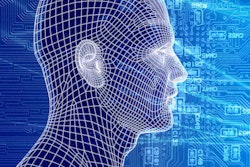
Across the world, the convergence of patient data, computer science applications, and the expertise of health professionals is creating new opportunities for delivering higher quality patient care through better management and availability of information. In every hospital, clinic, ambulatory facility, and health-related organization, health informatics has taken on an increasingly important role. Almost simultaneously with the advent of electronic health records came the use of digital technology to capture and even analyze medical images.
Imaging informatics, also sometimes referred to as radiology informatics or medical imaging informatics, concerns how medical images are used and exchanged throughout complex healthcare systems. This subspecialty has gained wide acceptance and is often seen as a mission-critical function in healthcare. Virtually every healthcare clinical discipline depends on imaging informatics.1
Certified Imaging Informatics Professional (CIIP) is an American certification that was launched by the American Board of Imaging Informatics (ABII), which was founded in 2007 as the result of a collaborative effort between the Society of Imaging Informatics in Medicine (SIIM) and the American Registry of Radiologic Technologists (ARRT). Its main purpose is to provide recognition to qualified imaging informatics professionals (IIPs) in the successful implementation and management of PACS. The ABII has administered the CIIP exam since 2007.
While the ABII holds responsibility for the certification of imaging IT professionals, it does not have a direct role in their training and education. An analogous situation can be seen in the relationship between the American Board of Radiology (ABR), which is the main accreditation body for radiologists, and the American College of Radiology (ACR), the American Roentgen Ray Society (ARRS), and the RSNA, which together share responsibility for the educational, advocacy, and political missions. Therefore, requests for educational and networking initiatives may be better undertaken by SIIM and other bodies.2
With the CIIP designation, the ABII does the following:
- Determines eligibility requirements
- Creates and maintains a certification exam
- Establishes and manages continuing education requirements
- Sets and manages recertification requirements
The CIIP test's 150 questions are classified into 10 content areas that are critical to competent performance in the field of imaging informatics. In descending order of their relative weighting, those areas are: image management, information technology, operations, communications, systems management, clinical engineering, medical informatics, procurement, project management, and training and education.
 Dr. Sergey Morozov, PhD.
Dr. Sergey Morozov, PhD.After successful completion of the exam, individuals are certified for 10 years during which time they must earn and report continuing education credits every two years. At the end of 10 years, diploma-holders must submit documentation of completing additional requirements in order for their certification to remain active.
Is this test designed for IT professionals, or should radiologists also participate? Should we all be more IT-educated? The president and vice president of the European Society of Medical Imaging Informatics (EuSoMII) -- Dr. Sergey Morozov, PhD, and Dr. Erik Ranschaert, PhD -- and Belgian radiologist Dr. Laurens Topff recently successfully completed the exam. I asked them about their experience.
Algra: Why should a radiologist want to become CIIP-certified?
Ranschaert: Sergey and I both participated in the entire process of becoming a CIIP with the intention to have a better idea of the qualifications and skills that are necessary to obtain this certificate.
As you know, imaging informatics is becoming an increasingly important discipline (if not crucial) for the radiology profession, but as far as we know, no specific training in this field is provided for radiology residents. At this moment, imaging informatics is not recognized as a radiological subspecialty so currently no examination is organized.
EuSoMII would like to increase the awareness of radiologists in the ongoing evolution and to provide trainees with the necessary skills to actively participate in the ongoing and progressively increasing digitization process of our profession.
I think this kind of training is necessary. If radiologists have to learn about the physics of MRI, then I think learning about the basic principles of imaging informatics (PACS, RIS, networking, standards, integrating the healthcare enterprise [IHE], and artificial intelligence [AI]) is at least as important.
 Dr. Erik Ranschaert, PhD.
Dr. Erik Ranschaert, PhD.Of course, imaging informatics is not for radiologists alone. Managing digital systems in a hospital or radiology department will certainly ask for a multidisciplinary approach in which other professionals are involved, such as clinical physicists, IT professionals, etc. But giving radiologists the opportunity to obtain a certificate such as the CIIP would certainly facilitate collaboration and communication between all parties, and would undoubtedly positively contribute to the further management of radiology departments and be in favor of providing better services to patients.
Topff: It's clear that radiologists have a role to play in the rapidly evolving field of imaging informatics. This doesn't mean that radiologists need to become informatics specialists and learn to write code. However, I believe that radiologists who understand the fundamentals of imaging informatics can improve the efficiency and accuracy of their daily work. Studying to obtain the CIIP certification is a good way to become familiar with these basic concepts. The SIIM provides an interesting webinar boot camp to help master the required technical and business skills for the exam.
Morozov: I think the best part of this exam is the preparation. It is good to update and structure your knowledge, skim through the lectures and notes, and study the SIIM boot camp material. I'm sure that CIIP-certified radiologists will benefit from better mutual understanding with IT specialists. CIIP certification is very useful, but it needs further structural refinement and tailoring to the radiologists' needs. It would also be useful to include practical hands-on questions or tasks, such as detecting a bad network connection, or linking a new imaging modality to the network.
Would you advise residents to obtain the CIIP certification?
Morozov: For young residents without any experience in management it might be too much or too difficult. It should be looked at as subspecialty training that can be completed after a few years of experience in the field. Moreover, the CIIP structure of the educational material offered needs to be refined. The applicability of several pieces of information is not very clear. Much information is offered for simple memorization, whereas the material to digest and understand the information more profoundly is missing. Reading the boot camp lecture notes would normally be sufficient to pass the examination, because it's easy to memorize.
Ranschaert: I agree with Sergey that this is too difficult for residents; the basic technological knowledge you need is quite advanced. So the whole training of residents should be adapted to prepare them for this kind of test. At this moment, it's kind of a subspecialty training with a mix of radiology, IT, and management skills.
 Dr. Laurens Topff.
Dr. Laurens Topff.Moreover, quite some information is irrelevant for European Union (EU)-based residents or radiologists, because it's referring to existing U.S. legislation and regulations. If thinking about creating a European-type of certificate similar to the CIIP, a specific European training should be provided, for example, by the ESR [European Society of Radiology] and the EUSOMII. The examination should be organized by a European board similar to the ABII. Our main idea behind obtaining this certificate was to get a better idea of the requirements, knowledge, and skills needed to become an IIP.
I think it can be interesting for European radiologists to obtain this kind of certificate because it would facilitate the communication with the IT department and improve radiologists' skills to manage a radiology department, which nowadays is highly dependent on informatics.
Topff: I obtained the CIIP certification when I was a senior resident. It provided me with a good introduction and foundation in imaging informatics to build on. As mentioned before, the CIIP certification is targeted at a broad audience of PACS administrators, technologists, IT professionals, and physicians. It would be even more interesting to have a course or certification in Europe that delivers practical IT knowledge specifically for radiology residents, similar to the National Imaging Informatics Curriculum (NIIC) and course that is being organized in the U.S. by the RSNA.
Future developments
EuSoMII applied to the ESR board in 2016 to introduce imaging informatics as a new subspecialty. As a result, the new subcommittee of ESR has been established with the purposes of fostering clinical adoption of IT and computer science techniques. The European training curriculum for radiology has also been updated with the topics of imaging informatics. Currently, the ESR leadership is discussing the establishment of dedicated certification for the clinical imaging informatics subspecialty. ECR 2018 and ECR 2019 will introduce a wide spectrum of IT, AI, and computer science teaching and scientific content.
 Dr. Paul Algra, PhD.
Dr. Paul Algra, PhD.In addition, EuSoMII has been involved in adapting the training curriculum for imaging informatics, so the society was able to contribute to the adoption of imaging informatics as a subspecialty; it is not certain yet whether this knowledge will be included in the European Diploma in Radiology (EDiR).
The NIIC is an online training course for senior U.S. radiology residents that is provided by the RSNA in collaboration with the SIIM, EuSoMII's sister organization. Either the ESR and/or EuSoMII could establish a collaboration with the NIIC to make this course accessible for European radiology residents, and either the ESR or EuSoMII should develop a similar training program in an adapted European version.
For more information on NIIC, click here.
Dr. Paul Algra, PhD, is a neuroradiologist at Northwest Hospital Group in Alkmaar, the Netherlands.
References
- American Board of Imaging Informatics website. https://www.abii.org. Accessed 8 February 2018.
- Kho DY, Bluth EI, Meenan C, Nagy PG. Certification of Imaging Informatics Professionals (CIIP): 2010 Survey of Diplomates. Journal of Digital Imaging. 2012;25(5):678-681.



















